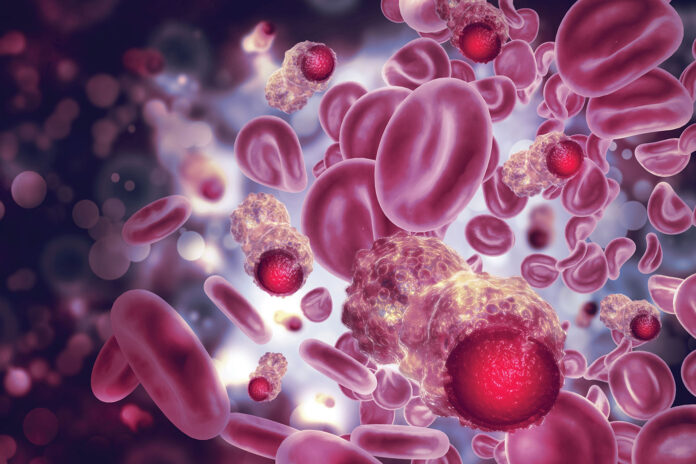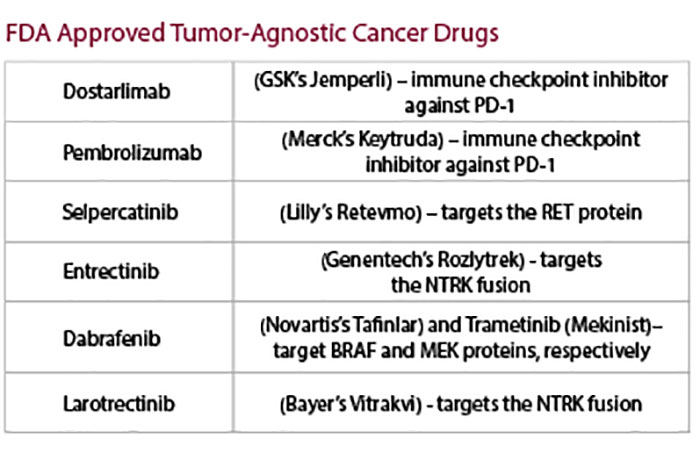
As he devises a tiny plasmonic nanopore system to capture even rare antigens and their ligands from tumors, George Alexandrakis is toiling at the vanguard of cancer research.
The University of Texas at Arlington bioengineering professor is developing a way of using even very small samples of tissue or blood to find peptide-presenting major histocompatibility complex (MHC) antigens that indicate which T cell receptor-like antibodies (TCRmAbs) could be used to improve a particular patient’s response to immunotherapies. His goal is to provide a way for doctors to deliver highly personalized cancer care.
The big problem for the industry is that despite the boom in cancer treatments—it’s now a $150 billion plus market—many patients don’t respond to the available drugs. Raising the response rate will depend largely on detecting cancers earlier and finding better biomarkers to guide treatment.
T cells help protect the body from infection. They can also attack cancer cells if they recognize them as foreign. But cancer cells can avoid these defenders by masking themselves to appear as healthy cells. MHCs, meanwhile, present antigens to the immune system, thus awakening these cells to a threat.Alexandrakis’ goal is to find the right complexes to stimulate the immune system. His plasmonic nanopores are milled into a thin layer of gold that focuses light strongly, like a lightning rod, to capture antigens and TCRmAbs in solution. It identifies bound antigens and “kicks back” the unbound ones. “It’s an optical trap that acts like a gate,” he said. These traps can detect even minute levels of the precious antigens he’s seeking and collect them. It’s essentially a nanosieve.
He added: “This research will help us see what T cells are being attracted to when they decide to invade a tumor. The sensors are sniffing out what activated the T cells and made them ready to fight. This will enable us in the future to design a personalized, time-sensitive treatment.”
He’s not alone on this frontier.
Many researchers are investigating new biomarkers to guide use of cancer drugs—particularly immunotherapies, because of their huge potential to actually cure the disease.

chief medical officer
Strata Oncology
Scott Tomlins, chief medical officer at Strata Oncology, explained, “Part of the issue for immunotherapy is that a lot of development occurred without biomarkers, much like the initial foray into targeted therapies.”
Drug developers have since learned their lesson, he continued, and now, “unquestionably, one of the hottest areas of research is [identifying] who will benefit from immunotherapies”
That trend, along with the rise of tissue-agnostic cancer treatments (see Table), will pave the way toward giving more patients the hope of an actual cure, he said.
But, as Caris Life Sciences senior vice president and chief precision medicine officer Milan Radovich explained, things are going to get more complicated as we progress. Researchers are starting to realize that instead of the “one mutation, one drug” paradigm, they are going to have to move to a new vision.

SVP and chief precision medicine officer, Caris Life Sciences
“We are starting to recognize the influence of gene networks,” he said. “The future will be understanding these networks, integrating gene expression, and then finding specific signatures.”
Dawn of a Revolution
Cancer treatment is transforming rapidly. What was once a wasteland, entered a long period of focus on drugs targeted to specific mutations. Non small cell lung cancer (NSCLC) is perhaps the poster child for this.
Then, seemingly out of nowhere, silver bullet–like effects of checkpoint inhibitors stunned over a decade ago, leading to the first real hope the war on cancer could be won. After about 30 years and 70 failed randomized trials in advanced melanoma, a new monoclonal antibody targeting cytotoxic T-lymphocyte-associated protein 4 (CTLA-4) had a significant effect (Alexander, W., Pharmacy and Therapeutics, 2016). Far from the notorious and often elusive five-year survival endpoint, some patients ended up living 10 years and more.
That drug was ipilimumab (Bristol-Myers Squibb’s Yervoy). CTLA-4 limits the ability of T cells to attack cancer cells. Repressing it had profound effect in some patients. Other checkpoint inhibitors include PD-1 and PD-L1 inhibitors, which entered the field in a similarly big way. The demand for these drugs is so high that the market for them alone is estimated at almost $100 billion.
But only about 15% to 20% of patients benefit so greatly from these treatments, and researchers have been unable to expand their reach.
So, the focus turned to biomarkers for these breakthrough immunotherapies. While progress has been made here, it’s slow going.
“We know that tumor mutational burden [TMB] is one of the most important surrogates for immunotherapy response,” said Tomlins. The problem here, he added, is that “you must measure a big footprint to get this. The question becomes, how do you do that with a routine test?”
And TMB does not indicate response in all cases. Likewise, there have been challenges with taking the seemingly obvious approach of detecting PD-L1 via immunohistochemistry. In that case, Tomlins said, it’s an arduous process that is not very reproducible.

But the horizon has shifted. For one thing, we have seen the rise of tumor-agnostic therapies, several of which have been approved by the FDA (see table). Also, treatment-guiding testing is becoming much more widespread, with more than a dozen companies offering extensive services, and many cancer centers doing their own. Finally, completely new markers are coming to light.
Tissue-Agnostic Treatments Arrive
Though we are still very much in the phase of targeted therapies that match drugs to particular mutations, the shift toward tissue-agnostic treatments has made significant strides.
The 2017 supplemental FDA approval of Merck’s PD1 blocker pembrolizumab for any microsatellite instability-high (MSI-H) tumors was the first such step. By October 2022, the agency released a draft guidance on “Tissue-Agnostic Drug Development in Oncology.”

associate professor
MD Anderson Cancer Center
“It’s a huge trend,” said Vivek Subbiah, associate professor at The University of Texas MD Anderson Cancer Center.
Subbiah was co-author of a recent study that showed the potential for RET inhibitors across many tumor types. Specifically, selpercatinib, which was approved in 2020 for certain lung and thyroid patients, also worked against multiple tumor types in a Phase I/II trial (LIBRETTO-001).
RET fusions arise when a portion of the RET gene breaks and rejoins with another piece of chromosome, creating a fusion protein that drives cancer development. These mutations are found in 5-10% of thyroid cancers and 1-2% of non-small-cell lung cancers. Across all other cancer types, they occur with a frequency of less than 1%. However, RET-altered cancers metastasize to the brain at a high frequency.
In LIBRETTO-001, 5% of patients had a complete response, 39% had a partial response, and 34% had stable disease. The median duration of response was 24.5 months and median progression-free survival was 13.2 months.
“We observed responses with selpercatinib regardless of cancer type, prior treatment history, or gene fusion partner. This confirms RET fusions as a tissue-agnostic target,” Subbiah said. “Implementation of comprehensive molecular screening strategies that include the ability to detect RET fusions will be critical for identifying patients across all cancers who may benefit from selpercatinib.”
That study came out in The Lancet Oncology last September. “These findings are a testament to the power of precision medicine,” Subbiah said.

SVP and oncology head
LabCorp
LabCorp senior vice president and oncology head Prasanth Reddy adds that diagnostic testing is keeping up with this shift.
“There are molecular alterations now associated with treatments that are approved for use regardless of tumor histologic type or site of origin. These biomarkers include microsatellite instability[-high] (MSI-H), high tumor mutation burden (TMB-H), NTRK and RET fusions, and BRAF V600E mutations,” he says.
New Tests on the Horizon
Another big shift has been the wider incorporation of next-generation sequencing (NGS) at both companies and healthcare centers.
Comprehensive genomic profiling by NGS, LabCorp’s Reddy notes, maximizes detection and diagnostic yield of validated biomarkers. “This leads to a faster path to clear, actionable results that empower oncologists to provide earlier intervention while reducing the need for serial testing,” he said.
Evidence is also emerging that points to other potential markers, or factors that may influence their usefulness.
For example, CD5 is a glycoprotein expressed on some immune cells, including dendritic cells, that are known to help prime T cell responses against melanoma. Further, there is evidence these cells are needed for optimal results with immune checkpoint blockade.

By analyzing data in The Cancer Genome Atlas, a public database that has information on 20,000 tumors representing 33 cancer types, a team at Washington University School of Medicine (WashUSM) discovered that patients with skin, lung, bone, breast, and cervical cancers had fared better on immunotherapy if they had higher levels of CD5+ dendritic cells in their tumors (He, M et al., Science, Feb 2023).
Lab experiments with human cells and mice showed CD5+ dendritic cells are required for effective T cell activity against tumors. The team saw this in multiple cancer types.
“Our studies suggest this could be both an important diagnostic marker but also a good therapeutic target to combine with immunotherapies,” said senior author Eynav Klechevsky, an assistant professor of pathology and immunology at WashUSM and a researcher at Barnes-Jewish Hospital.
Another group looked at the effect of germline mutations on somatic mutations that drive cancers. They used tumor-targeted sequencing data from 12,413 patients across 11 cancer types in the Dana-Farber Profile cohort integrated with germline cancer gene expression quantitative trait loci (eQTL) from the Genotype-Tissue Expression Project (Liu, et al., Cancer Research, Feb 2023).

postdoctoral research fellow at the Harvard T.H. Chan School of Public Health
“It’s known that the germline can affect somatic mutations, but what are the underlying mechanisms?” asked lead author, Yuxi Liu of the Harvard T.H. Chan School of Public Health.
Mutations in the ATM gene, for example, are known to increase the risk of certain cancers. In this study, variants that upregulate ATM expression were associated with a decreased risk of somatic ATM mutations across eight cancer types. Meanwhile, GLI2, WRN, and CBFB eQTL were associated with global tumor mutational burden of cancer genes in ovarian cancer, glioma, and esophagogastric carcinoma, respectively.
Perhaps this all circles back to the gene network effect that Caris’s Radovich pointed out. “We will be looking at expression of hundreds of genes and using other artificial computational methods to make sense of it,” he says.
Until then, companies are not just polishing their tests, they are working with the broader cancer treatment community to match more patients to drugs that may help them, often through clinical trials. Caris, for example, has more than 75 organizations in its Precision Oncology Alliance. These groups have early access to Caris data and can identify biomarker-directed trials.
“When it comes to matching a patient with a therapy, we leave no stone unturned,” says Radovich.
Malorye Branca is a freelance science writer based in Acton, MA.













